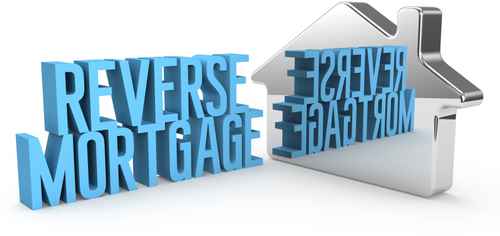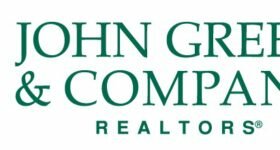Baby boomers are retiring at a rate of about 10,000 per day (more than 3.5 million a year) and will continue doing so for the next decade. According to a report by the Economic Policy Institute (EPI), the average household aged 56-61 has amassed a $163,577 nest egg. While that number might seem encouraging, it’s actually frightening. Over the course of a 20-year retirement, $163,577 amounts to just $8,178 a year, or $681 a month, of income.
That means these people will be looking everywhere for retirement funds. One of those places is the equity in their homes. Reverse mortgages are going to be an attractive option for years to come.
What You Can Expect From a Reverse Mortgage
A reverse mortgage is not the same as a home equity loan. With a second mortgage, or a home equity line of credit, borrowers must make monthly payments on the principal and interest. A reverse mortgage is different, because it pays you – there are no monthly principal and interest payments. But you are required to pay real estate taxes, utilities, and hazard and flood insurance premiums.
Reverse mortgages are technically known as a Home Equity Conversion Mortgage (HECM) according to HUD. One very important danger that people need to realize is that a reverse mortgage does not fully protect them from losing their home. Yes, there are laws preventing a reverse mortgage from foreclosing on the home as long as the person lives in it. However, it does not protect them from owing property taxes or from having to make homeowner insurance payments that are required by almost every loan. Those needing to draw on a reverse mortgage are typically in bad financial condition and are the most likely to have trouble keeping up with property taxes and homeowners insurance. Still, there are valid strategies for using reverse mortgages.
The FHA’s reverse mortgage program has several plans allowing you to withdraw some of the equity in your home with an adjustable interest rate:
- Tenure – equal monthly payments as long as at least one borrower lives and continues to occupy the property as a principal residence.
- Term – equal monthly payments (paid to you) for a fixed period of months selected.
- Line of Credit – unscheduled payments or in installments, at times and in an amount of your choosing until the line of credit is exhausted.
- Modified Tenure – combination of line of credit and scheduled monthly payments for as long as you remain in the home.
- Modified Term – combination of line of credit plus monthly payments for a fixed period of months selected by the borrower.
For fixed interest rate mortgages, you will receive the Single Disbursement Lump Sum payment plan.
Protecting 401K and IRA Payouts
People in a relatively healthy financial position may find this option appealing. They can set up a reverse mortgage as a line of credit. By far, most 401k and IRA type retirement accounts are invested in stocks or mutual funds. We’ve all seen how these can take big swings over the years. During the bad times, a reverse mortgage line of credit can be used instead of further drawing down a 401K or IRA that the stock market is already shrinking. It can be a way of preserving capital so that it can again grow when the markets return to profitability.
A related way of using a reverse mortgage is drawing on it during your early years of retirement to allow a 401K or IRA to continue appreciating in value. This isn’t without risk because no one knows what’s going to happen with the stock markets in the future. During years of high earnings for 401Ks and IRAs it might even be practical to use part of those earnings to pay down a reverse mortgage to preserve your home equity.
Reverse Mortgages Are Relatively New
Although the reverse mortgage has been around since the early 1960s, it is only in recent years that it has become a more popular retirement financial tool. With the onslaught of baby boomer retirements, reverse mortgages are almost certain to both grow in popularity and go through significant changes. As it stands today, for most retirees, the most favorable practice appears to be setting it up as a line of credit that can be drawn on for unexpected expenses and to maximize returns on other investments.
To be eligible for a FHA HECM, the FHA requires that you be a homeowner 62 years of age or older, own your home outright, or have a low mortgage balance that can be paid off at closing with proceeds from the reverse loan, have the financial resources to pay ongoing property charges including taxes and insurance, and you must live in the home. You are also required to receive consumer information free or at very low cost from a HECM counselor prior to obtaining the loan. You can find a HECM counselor online or by phoning (800) 569-4287. You can receive additional free information about reverse mortgages in general by contacting the National Council on Aging at (800) 510-0301. It is smart to know more about reverse mortgages, and decide if one is right for you!
Please leave a comment if this article was helpful or if you have a question.
 Author bio: Brian Kline has been investing in real estate for more than 35 years and writing about real estate investing for eleven years. He also draws upon 25 plus years of business experience including 12 years as a manager at Boeing Aircraft Company. Brian currently lives at Lake Cushman, Washington. A vacation destination, a few short miles from a national forest in the Olympic Mountains with the Pacific Ocean a couple of miles in the opposite direction.
Author bio: Brian Kline has been investing in real estate for more than 35 years and writing about real estate investing for eleven years. He also draws upon 25 plus years of business experience including 12 years as a manager at Boeing Aircraft Company. Brian currently lives at Lake Cushman, Washington. A vacation destination, a few short miles from a national forest in the Olympic Mountains with the Pacific Ocean a couple of miles in the opposite direction.







I would like to know can I get a second reverse mortgage. The first mortgage has an outstanding principal balance of $289,000.00 dollars.
Hi Carl,
Thanks for your comment. You ask a good question. However, you might not like the answer. Generally, a reverse mortgage must be able to pay off the existing mortgage(s). In your case, the $289,000 outstanding principle. You would be entitled to the reverse loan proceeds above that amount. Obviously, the current value of the home would have to be for considerably more than the outstanding balance. A mortgage broker may be able to help you.
Thanks,
Brian Kline